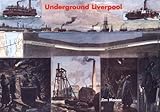High Park Street Reservoir in Toxteth is to be open to the public for just one day as part of English Heritage’s Heritage Open Days. There are a lot of buildings open in Liverpool as part of Heritage Open Days this year, and the High Park Street Reservoir can be seen as part of the Toxteth Town Hall event.
This listed building is currently owned by the Dingle 2000 Development Trust. The Trust tried to renovate it for use by the community, but rising costs forced them to put their plans on hold.
The reservoir is one of many which were built in the Victorian period to serve Liverpool once it became clear that the natural local sources (wells, streams, springs) were not up to the job of supplying a growing city.
Water for Liverpool
In the dim and distant past, villages would have been established on a site which had certain essentials: food, shelter, a defensible area, and most importantly, a water supply.
However, as the industrial revolution gained pace, and cities like Liverpool, London and Manchester became the centre of huge swathes of immigration and population increase, the strain on the water supply became unbearable. Adding to this were the demands on water from industry itself – all those coal-fired steam engines needed a constant water source.
So from streams, wells and springs, water supplies developed into reservoirs, pumps and dams. Mather’s Dam and Jackson’s Dam near central Liverpool had taken water from a stream to feed industry since the 17th Century. However, by the end of the 19th Century these small localised sources were not enough, and schemes to alleviate shortages were planned.
Rivington Reservoir below Anglezarke Moor in the Pennines was constructed between 1852 and 1856. At the same time water fountains were appearing across Liverpool and more wells were being sunk throughout the city. Reservoirs like that on High Park Street were also built at Aubrey Street, Breeze Hill, Dudlow Lane, Kensington, Speke, Torr Street and Woolton (on the aptly named Reservoir Road).
High Park Street reservoir was built in 1855, while the Rivington building project was under way. The walls are four foot thick, and would have been lined with bitumen to create a watertight seal. Nine inches of brick were placed inside this bitumen. Towers were attached to some of these reservoirs to improve the ‘head’ of water – the water pressure needed to save on the need to pump. High Park Street has such a tower, and the whole structure is now a listed building.
Recommended Reading
 A lot of the detail in this article comes from Underground Liverpool by Jim Moore (1998, Bluecoat Press). The book includes a chapter called Water supplies in Liverpool which covers the Rivington project, the building of water fountains and local reservoirs, as well as later projects in Wales. There’s also summary information on the reservoirs mentioned above.
A lot of the detail in this article comes from Underground Liverpool by Jim Moore (1998, Bluecoat Press). The book includes a chapter called Water supplies in Liverpool which covers the Rivington project, the building of water fountains and local reservoirs, as well as later projects in Wales. There’s also summary information on the reservoirs mentioned above.







